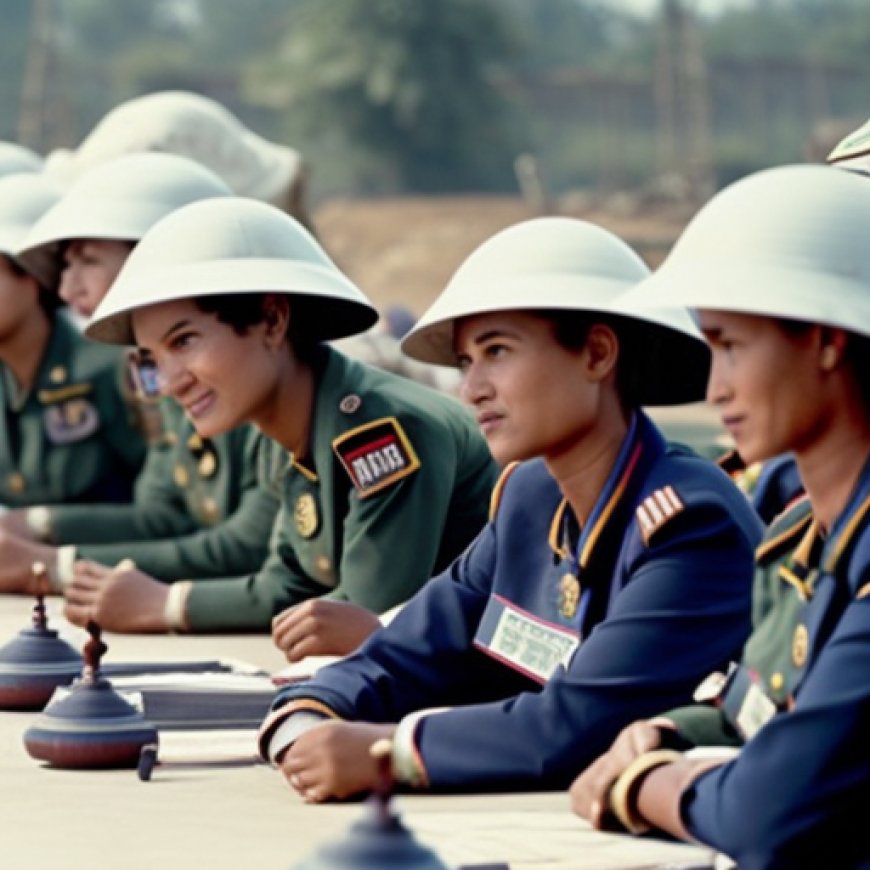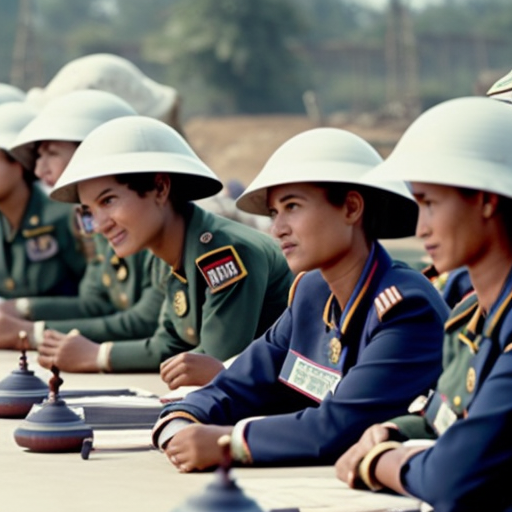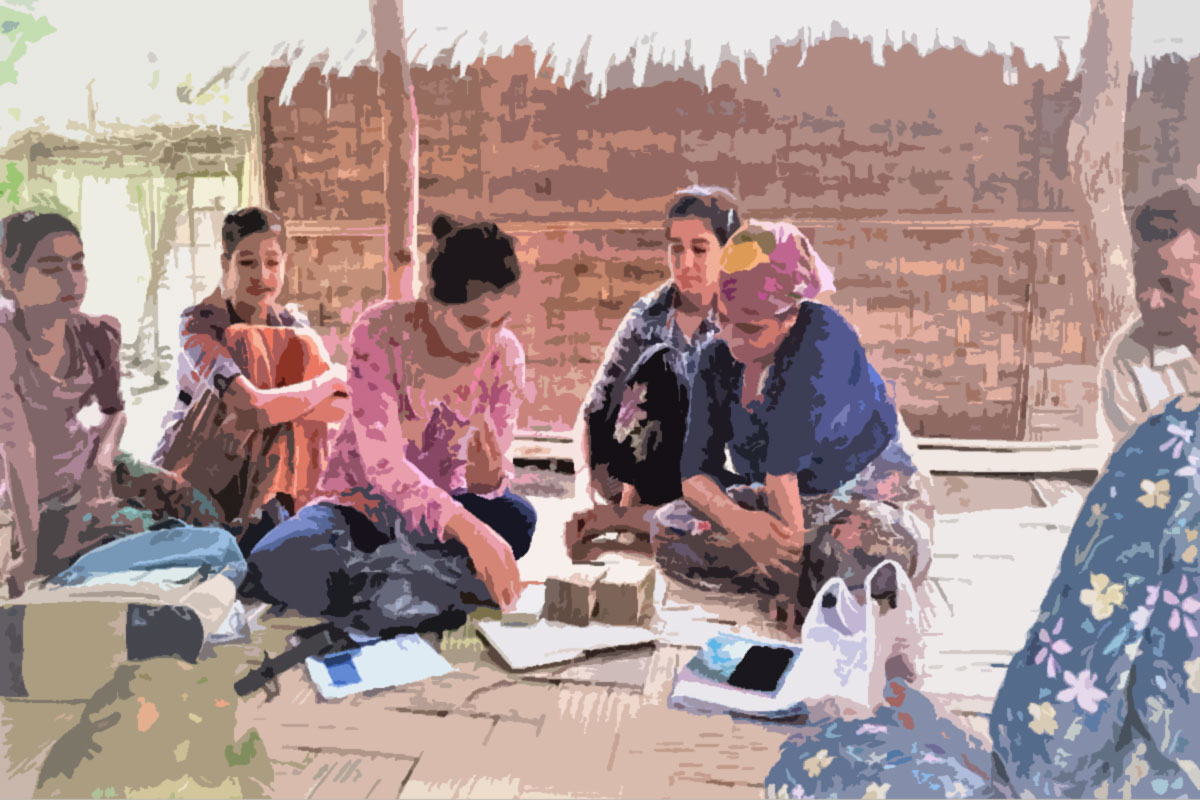Women’s organizations remain at the front line of the crisis response in Myanmar | UN Women – Headquarters
Women's organizations remain at the front line of the crisis response ... UN Women


Local Women-Led Organizations in Myanmar Play Vital Role in Humanitarian Support

At a time when women and girls desperately need humanitarian support, external borders have been closed to international humanitarian workers. Instead, it is local women-led and women’s rights organizations and other local actors that have stepped up to shoulder the delivery of critical services to crisis-affected communities, often at great personal risk.
Supporting Local Women’s Organizations in Myanmar
Since 2021, UN Women has supported 91 local women’s organizations in Myanmar through training on leadership, representation, advocacy skills, and awareness raising on humanitarian decision-making mechanisms and processes, contributing to increased access to tools and resources available in humanitarian planning and response processes and mechanisms.
The work has been carried out in partnership with UNFPA, through a grant from the Central Emergency Relief Fund (CERF). More than 30 per cent of that funding has directly supported local women-led and women’s rights organizations. Without them, says Rowena Dacsig, programme specialist for UN Women Myanmar, women and girls in Myanmar would be missing their last remaining lifeline.
Delivering Critical Services to Women and Girls
Beyond the military checkpoints of Kachin and Rakhine States, local women-led and women’s rights organizations have delivered critical services to women and girls who have experienced or are at risk of GBV, such as psychosocial counselling and humanitarian items like dignity kits, which include basic sanitary and hygiene supplies.
Local organizations have also been supported by UN Women to provide livelihood services, including financial skills development training and agricultural activities to 4,094 GBV survivors and women at risk, many of whom are now responsible for household income and earnings as husbands and sons are recruited by armed groups.
“Only those organizations which have local partners can carry on with their work”, says Dacsig. “Otherwise, the services to survivors and those at risk of GBV, including in internally displaced persons camps, would have ceased completely. Without these local partners, we’d be totally blind to the needs of women and girls in Myanmar because little to no information is coming out of these communities.”
Supporting Local Women’s Organizations
In return, she adds, UN Women and UNFPA have also supported local women’s organizations through trainings on topics such as protection against sexual abuse and exploitation, upholding accountability within affected populations, and conducting risk assessments and gender analysis to inform delivery of critical services, for example, in relation to protection and livelihoods.
* Name has been changed to protect the privacy of the individual.
SDGs, Targets, and Indicators
1. SDGs Addressed or Connected to the Issues Highlighted in the Article:
- SDG 5: Gender Equality
- SDG 8: Decent Work and Economic Growth
- SDG 10: Reduced Inequalities
- SDG 16: Peace, Justice, and Strong Institutions
2. Specific Targets Under Those SDGs Based on the Article’s Content:
- SDG 5.5: Ensure women’s full and effective participation and equal opportunities for leadership at all levels of decision-making in political, economic, and public life.
- SDG 8.5: By 2030, achieve full and productive employment and decent work for all women and men, including for young people and persons with disabilities, and equal pay for work of equal value.
- SDG 10.2: By 2030, empower and promote the social, economic, and political inclusion of all, irrespective of age, sex, disability, race, ethnicity, origin, religion, or economic or other status.
- SDG 16.7: Ensure responsive, inclusive, participatory, and representative decision-making at all levels.
3. Indicators Mentioned or Implied in the Article:
- Increased access to tools and resources available in humanitarian planning and response processes and mechanisms.
- Delivery of critical services to women and girls who have experienced or are at risk of gender-based violence (GBV), such as psychosocial counseling and dignity kits.
- Provision of livelihood services, including financial skills development training and agricultural activities, to GBV survivors and women at risk.
- Trainings on protection against sexual abuse and exploitation, upholding accountability within affected populations, and conducting risk assessments and gender analysis.
4. Table of SDGs, Targets, and Indicators:
| SDGs | Targets | Indicators |
|---|---|---|
| SDG 5: Gender Equality | Target 5.5: Ensure women’s full and effective participation and equal opportunities for leadership at all levels of decision-making in political, economic, and public life. | – Increased access to tools and resources available in humanitarian planning and response processes and mechanisms. – Trainings on protection against sexual abuse and exploitation, upholding accountability within affected populations, and conducting risk assessments and gender analysis. |
| SDG 8: Decent Work and Economic Growth | Target 8.5: By 2030, achieve full and productive employment and decent work for all women and men, including for young people and persons with disabilities, and equal pay for work of equal value. | – Provision of livelihood services, including financial skills development training and agricultural activities, to GBV survivors and women at risk. |
| SDG 10: Reduced Inequalities | Target 10.2: By 2030, empower and promote the social, economic, and political inclusion of all, irrespective of age, sex, disability, race, ethnicity, origin, religion, or economic or other status. | – Delivery of critical services to women and girls who have experienced or are at risk of GBV, such as psychosocial counseling and dignity kits. |
| SDG 16: Peace, Justice, and Strong Institutions | Target 16.7: Ensure responsive, inclusive, participatory, and representative decision-making at all levels. | – Trainings on protection against sexual abuse and exploitation, upholding accountability within affected populations, and conducting risk assessments and gender analysis. |
Behold! This splendid article springs forth from the wellspring of knowledge, shaped by a wondrous proprietary AI technology that delved into a vast ocean of data, illuminating the path towards the Sustainable Development Goals. Remember that all rights are reserved by SDG Investors LLC, empowering us to champion progress together.
Source: unwomen.org

Join us, as fellow seekers of change, on a transformative journey at https://sdgtalks.ai/welcome, where you can become a member and actively contribute to shaping a brighter future.







